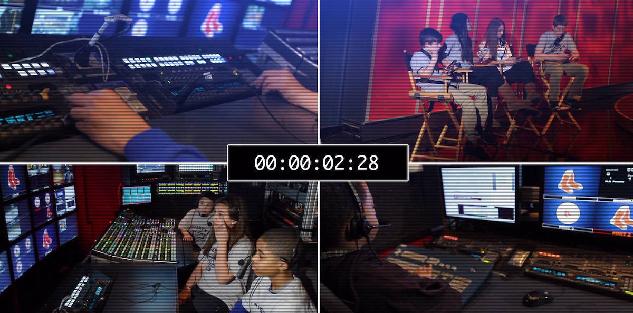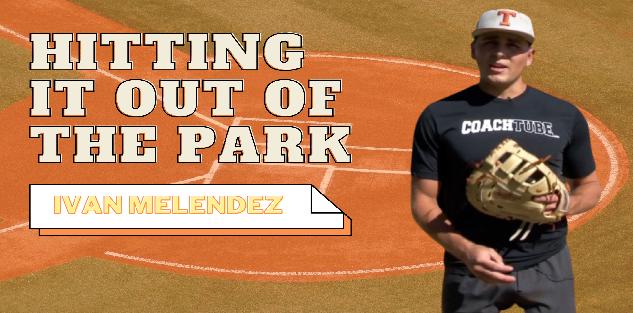Featured courses
- Understanding The Shift by Brandon Ogle
- Two Drills to Improve Outfield Movement and Communication by Grant Young
- The Ultimate Resource For Coaching Youth Baseball by Jackson Chlebowy
- Become a Master at Bunting by Brandon Ogle
- 5 Reasons Why There Is More To Good Base Running Than Just Speed by Brandon Ogle
- Three Injury-Prevention Tips For Your Offseason Pitching Program by Grant Young
- How to Teach Hitting to the Next Generation by Grant Young
- Developing Defensive-Minded Baseball Catchers by Grant Young
- 3 Baserunning Tips to Score More Runs in Baseball by Grant Young
- 5 Outfield Drills to Work on in Season by Alec Burris
- Keys For Scoring More With Runners on First and Third Base by Grant Young
- How to Develop Your Game to Become a Five-Tool Player by Brandon Ogle
- 3 Coaches Share the Keys to Running Baseball Practice the Right Way by Grant Young
- Four Drills to Sharpen a Baseball Hitter’s Vision at the Plate by Grant Young
- Four Quotes to Hit Better With Two-Strikes by Grant Young
- Four of Former MLB Pitcher Juan Nieves’ Movement-Based Pitching Drills by Grant Young
- Two Tips For Developing an Elite Baseball Bullpen by Grant Young
- Overcoming the Four Challenges of Indoor Baseball Practices Because of Weather by Grant Young
- Three Tips to Make Your Baseball Team Mentally Tougher by Grant Young
- Three Priceless Philosophies to Motivate Your Baseball Team by Grant Young
- Three Offseason Baseball Drills to Simulate Competition by Grant Young
- Three Baseball Offseason Strength and Conditioning Essentials by Grant Young
- Important Ways to Improve Your Baseball Team’s Baserunning by Grant Young
- Three Ways to Perfect Hitting Mechanics From an MLB Icon by Grant Young
- Catchers can influence pitchers...for bad or good by Drew Johnson
- Throwing Strikes and Playing Good Defense Equals Wins by Jose Ortiz
- Legendary Indiana Head Baseball Coach Bob Morgan’s Offensive Theory by Grant Young
- Tennessee Head Baseball Coach Tony Vitello on How to Practice Baserunning by Grant Young
- Three Great T-Ball Drills For Youth Baseball Players by Grant Young
- How to Manage a Baseball Pitching Staff by Grant Young
- Three Uncommon Tips to Become a Better Hitter by Grant Young
- How a Baseball Coach Can Develop Strike Throwers by Grant Young
- Drills to Develop Elite Baseball Outfielders by Grant Young
- Baseball Training Exercises to Strengthen Arm and Bat Speed by Grant Young
- How to Use Bunting to Score More Runs by Grant Young
- How To Build An Elite Baseball Infielder by Grant Young
- Three Drills to Improve Your Baseball Team's Infield Play by Grant Young
- Three Keys to Curating a Pitching Staff’s Success by Grant Young
- 3 Techniques to Develop a Baseball Player’s Hitting Approach by Grant Young
- How to Cultivate Confidence Within Your Pitchers by Grant Young
- 5 Every Day Drills To Help You Become A Better Catcher by tyler Linderman
- How to Throw A Curveball by Brandon Ogle
- How to Assemble a Lock-Down Bullpen by Brandon Ogle
- How to Throw a Sinker by Brandon Ogle
- How to be a Smart Baserunner by Brandon Ogle
- Improving a player's slugging average by Phillip Woolgar
- The 8 Fundamentals of Pitching by Drew Johnson
- How to Throw a Deceiving Changeup by Brandon Ogle
- Step Up Your Outfield Defense With These Three Drills by Jose Ortiz
- 8 Baseball Drills Every Player Should Practice by Drew Johnson
- How To Become An Elite Defensive Outfielder by Tyler Linderman
- 5 Tips For Crushing A Curveball by Johnny Grassi
- LEGENDS FOR YOUTH INCLUSION BASEBALL CLINIC by Phil
- Fourteen Ways To Turn A .300 Hitter Into A .210 Hitter by Jay P. Granat, Ph.D.
- How To Become The Ideal Leadoff Man by Brandon Ogle

Improving a player's slugging average
A player with the strength to hit for the fences is something any coach lies awake at night hoping for. During those intense, close games in late innings, nothing is better than having your number one power batter step to the plate with a confident and determined look in his eyes.
While having a few power baters is not necessary to be a winning team, it certainly helps clinch a few of the tighter contests.
Developing a slugging average in young players can be tough because at this age many youth ball players typically grab the most comfortable bat…which is usually also the lightest bat. Sure, it’s easier at first to swing a light bat much faster than a heavy bat. But getting your players used to heavier lumber will likely improve your team’s overall performance.
Understanding the optimal bat weight for each playerayer
Choosing the right bat is a top component to ensuring your player hits for the fences. However, it can also be the most difficult factor to determine.
According to research from Penn State University, optimal bat weight depends on the league in which the player competes. Hmm, well, what if there were a handy rule of thumb a coach could use? There is! Those great researchers at PSU have come up with just the equation: For junior leaguers aged 13 to 17 years, the bat weight in ounces is the player’s height divided by 3 plus 1.
Determining detailed weightight
PSU researcher Terry Bahill even takes this general formula a step further in determining optimal power potential.
Along with his team, Bahill studied the relationship between bat weight and bat speed. His data reveal that players are not able to swing heavy bats as quickly as lighter ones, but the specifics vary considerably from player to player. The specific bat speed is also determined by the player’s abilities.
He determined that the measurement of bat speed among junior leaguers is made clear by a straight-line equation, also developed by the team at PSU. Now, this equation is for math geeks and maybe those who take finding the perfect bat weight a bit too seriously, so don’t be dismayed if you can’t capture the essence of this equation immediately.
This calculation assumes an average height and weight of the player, as well as an average pitch speed. Essentially, it is important to measure your player’s bat swing with a device like the Bat Chooser. This device is like a radar detector for your bat. Knowing your player’s bat speed with a given bat is a major factor in the equation.
Here’s what Terry writes: “[B]atted ball velocity initially increases as the bat weight increases until the bat swing speed drops below a certain level after which the batted velocity begins to decrease again.” The result is choosing a bat that allows your player to have the optimum bat swing.
So, only by looking at the more complicated calculation can make choosing the right bat weight complicated. However, the section “Understanding Bat Weight for Your Player” simplifies the equation. [this previous sentence is a bit clunky and awkward…rephrase.]
Calculating the specific optimal bat speed will never be easy without conducting a full-scale bat velocity test on your players. However, just follow the more straightforward equation of the bat weight (in ounces) of the player’s height divided by 3 plus 1. This will give each player on your team the best bat weight, in turn most likely leading to a better slugging average for each player and for your team as a whole.



